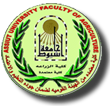Robinia pseudoacacia L., commonly known as black locust, is a nitrogen-fixing species characterized by multiple uses. Among these uses, black locust is of special interest to beekeepers due to its abundant flowering and delicious honey. Given the great importance of honey production in Italy, beekeepers are looking for genotypes that have a delayed flowering time. As a consequence, the aim of the present study was to develop a complete protocol of micropropagation for genotypes, which have been selected in the Veneto region due to their delayed flowering, ie, about 3 months, in comparison with the normal flowering time (from late April to early June). The subsequent steps of the micropropagation protocol (explant decontamination, shoot induction, proliferation, and rooting) were investigated and optimized. The most effective decontamination treatment of explants (axillary buds from shoots developed in a greenhouse) was obtained using 50 mg/L AgNO3 for 20 min. This method resulted in the highest survival and regeneration rates for the explants (90%), although contamination was slightly higher than when using HgCl2 and NaOCl. The best medium for shoot establishment was MS with 1 mg/L of mT, which achieved 100% regeneration of the explants. In comparison with BA, mT at 1 mg/L was shown to be the best stimulator of shoot proliferation, especially in combination with 0.7 mg/L GA3 (Proliferation Rate, 4.7). An intermediate 2 h treatment with AgNO3, in combination with mT, was shown to be beneficial in improving the shoot proliferation and quality in the subsequent subculture in a gelled medium. As for shoot rooting, the shoots …
Research Abstract
Research Date
Research Department
Research Journal
Horticulturae
Research Member
Research Publisher
Multidisciplinary Digital Publishing Institute
Research Vol
10
Research Year
2024
Research Pages
1317
 Do you have any questions?
Do you have any questions? 
